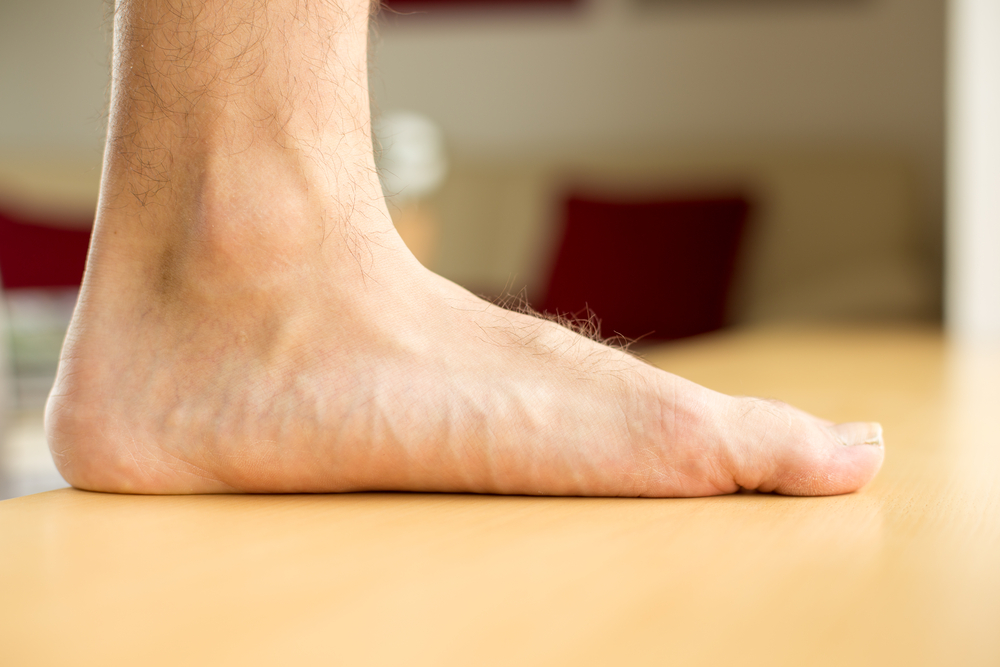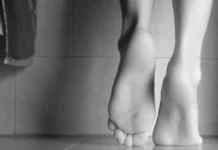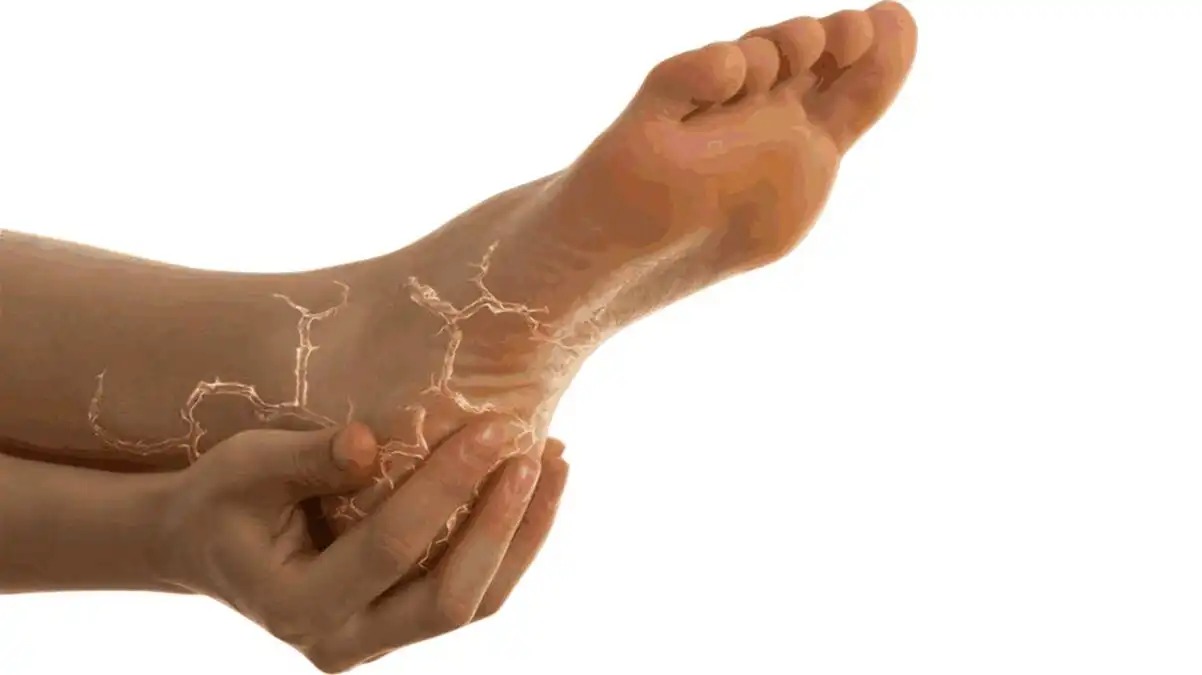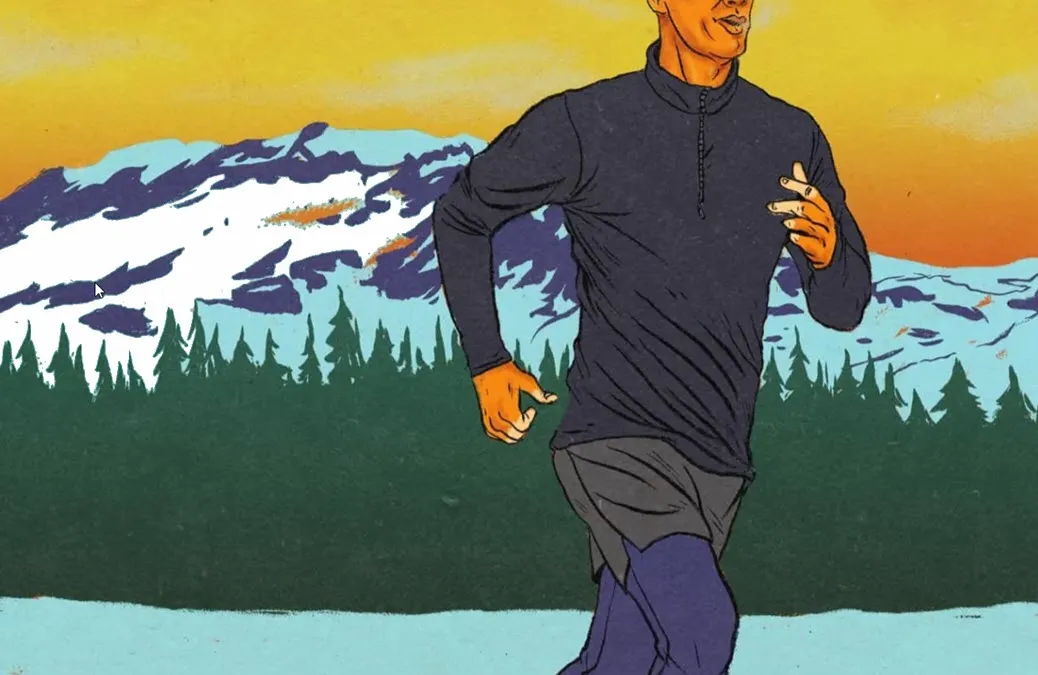Acquired flatfoot in adults, also known as posterior tibial tendon dysfunction (PTTD), is a painful condition that occurs when this tendon becomes inflamed, stretched or torn. Since its function is to support the medial longitudinal arch, a weakness in this tendon will lead to flattening of the foot. The foot will be pronated.
The foot absorbs a lot of shock during walking and needs to have an absorption mechanism. Without it, the vibration waves would be too damaging to the spine, hips and knees. The menisci of the knee and the intervertebral disc would wear out prematurely.
The foot pronated when it lands on the ground resulting in a visible lowering of the arch of the foot. People who pronate excessively when carrying weight are often referred to as having flat feet. They actually have an arch when they are not carrying weight, but this arch is lost when they are carrying weight. For this reason, their condition is more accurately described as a soft flat foot. A rigid flatfoot is a foot that is permanently flat and is not the result of excessive pronation when weight is applied.

Under the feet, there is a band of connective tissue called plantar fascia that serves as a shock absorber. This is made of three bands (arches) forming :
- Inner longitudinal plantar arch which is between 15 and 20 mm from the ground
- Longitudinal external plantar arch which is located 5 mm from the ground.
- Transverse arch which rests on the ground

- The foot is flat when the inner longitudinal arch of the foot is flattened and touches the ground.

- There are two types of flat foot:
- Flexible: The foot has a normal arch at rest (not standing or walking), but it disappears as soon as it makes contact with the ground.
- Rigid: If there is no arch, sitting or standing
Causes
Acquired flatfoot was once thought to be a failure of the posterior tibial tendon, although it is now known that the ligamentous structures of the ankle also play a role in the genesis of acquired flatfoot in adulthood[1][2] The malfunction of the posterior tibial tendon is a multifactorial mechanism. Many patients have an existing flatfoot, and many also have obesity. Another factor is that the tendon is relatively poorly vascularized as it makes an abrupt turn posterior to the medial malleolus, which promotes tendon rupture due to poor repair. Episodes of previous trauma, corticosteroid injections, arthritis, neuromuscular conditions, and diabetes all predispose to the development of an adult-acquired flatfoot.
- Occurs only in adults
- Affects women about four times more frequently than men.
- Usually develops from overuse of the posterior tibial tendon.
- People who run frequently and those involved in high impact sports such as basketball, tennis or football.
- Diabetes
- Obesity
- High blood pressure (hypertension)
- Previous injury or surgery to the posterior tibial tendon
Pronation is a combined movement of the foot and ankle that includes eversion of the calcaneus, abduction of the forefoot and some dorsiflexion at the subtalar joint
Hindfoot valgus is another term for eversion of the calcaneus, which leads to pronation of the foot.
Posterior tibial tendon dysfunction
- When a rigid Posterior tibial tendon dysfunction flatfoot develops in adults, it is called ‘adult acquired flatfoot’ or ‘posterior tibial tendon dysfunction’.
- This type of flatfoot develops due to the weakening of the tendon of the posterior tibial muscle, which is a major support structure for the arch of the foot.
- It occurs when the posterior tibial tendon becomes inflamed or torn.
- It is a condition that leads to flattening of the arch and rolling of the ankle.
- It is a progressive deformity with early symptoms of pain and swelling in the inner arch of the foot and ankle.
- It can eventually lead to arthritis of the foot and ankle joints.
How the posterior tibial tendon becomes inflamed:
- An acute injury, such as a fall, can tear the posterior tibial tendon or cause inflammation.
- Overuse (repetitive).
- Basketball
- Tennis or football
- Pregnancy
- Excess weight
- Ergonomics, lifting too much weight
- A stiff shoe
- Once the tendon becomes inflamed or torn, the arch will slowly fall (collapse) over time.
Other possible causes
- Posterior tibial tendinopathy
- The posterior tibial is an essential stabiliser of the arch
- If weakness is apparent and the tissue is overloaded, tendinopathy or muscle injury may occur.
- Plantar Fasciitis
- May develop due to altered arch biomechanics and increased midfoot pronation.
- The plantar fascia is overloaded while trying to compensate for this ongoing loss of arch integrity.
- Medial tibial stress syndrome
- Due to excessive pronation, the posterior tibial or soleus muscle may apply altered tension to the medial aspect of the tibia.
- This unreasonable movement results in medial tibial stress syndrome: shin splints or stress fractures of the tibia.
- Achilles tendinopathy
- Flat feet can cause the medial aspect of the Achilles tendon to compensate for increased midfoot movement and exposure to abnormal loads leading to injury.
- Achilles tendinopathy or its subgroup
- Achilles tendonitis may result.
- Patellofemoral pain syndrome
- The patella is usually affected because of its altered translation during movement.
- Changes in ankle and knee rotation can push the patella in the wrong direction and cause anterior knee pain
- Biomechanical factors
- Excessive pronation in the midfoot can cause a cascade effect through the ankle, knee and hip inducing tibial (internal rotation) and femoral (patellar) rotation changes.
- These changes, although sometimes subtle, can predispose your knee and hip joints to increased instability and an increased likelihood of acute trauma.
- Nerve damage to the common peroneal nerve or posterior tibial nerve leading to muscle paralysis or weakness;
- Trauma to the foot or ankle. Landing heavily on the feet after jumping or falling can result in calcaneal fractures or third degree sprains of the elastic ligament (Magee, 1992). In the elderly, acquired flatfoot is associated with rupture of the posterior tibial tendon (Buschbacher, 1994);
- Footwear that does not provide medial arch support may aggravate flatfoot, particularly during activities such as running or hiking.
Postural assessment
- Mild flatfoot: 4-6 degrees of hindfoot valgus when measured in the standing posterior view
- Moderate flatfoot: 6-10 degrees of hindfoot valgus.
- Severe flatfoot: 10-15 degrees of hindfoot valgus

- The Achilles tendon has a valgus orientation.
- Medial tibial torsion is possible.
- Valgus may occur at the knees.
- Internal rotation may occur at the hip.
- The medial arch is flattened and the foot pronated.
- The head of the talus is bulging medially. There is redness or callus formation where the client’s shoe rubs against the head of the talus.
- A valgus orientation of the first metatarsal joint may be present. A bunion may also be noticeable.
- The forefoot may be abducted.
- With Morton’s foot, the head of the second metatarsal is longer than the first. Callus formation over the heads of the first and second metatarsals may be present. If the client is wearing older shoes that do not have arch or calcaneal support, the therapist checks for wear patterns and overhanging tops. Excessive medial displacement or bulging of the heel counter on the sole of the shoe indicates a flat foot
Reference
1.Deland JT. Adult-acquired flatfoot deformity. J Am Acad Orthop Surg. 2008 Jul;16(7):399-406. [PubMed]
2.Hadfield MH, Snyder JW, Liacouras PC, Owen JR, Wayne JS, Adelaar RS. Effects of medializing calcaneal osteotomy on Achilles tendon lengthening and plantar foot pressures. Foot Ankle Int. 2003 Jul;24(7):523-9. [PubMed]

























